The Lodges
Introduction
Text-to-speech Audio
Images
Current image of the Kappa Alpha Order lodge
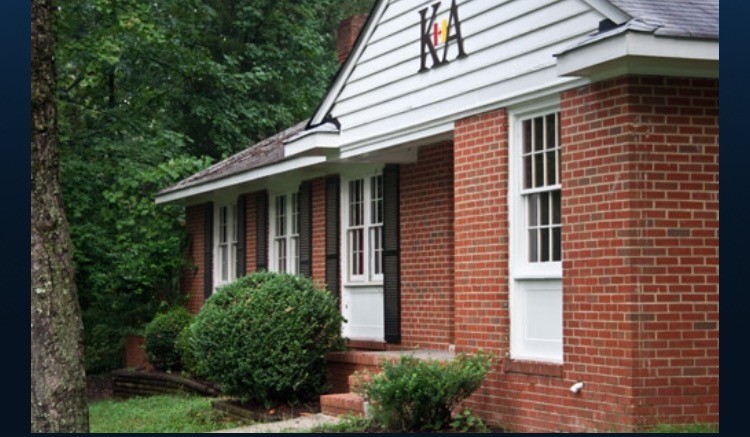
Phi Delta Gamma lodge 1954
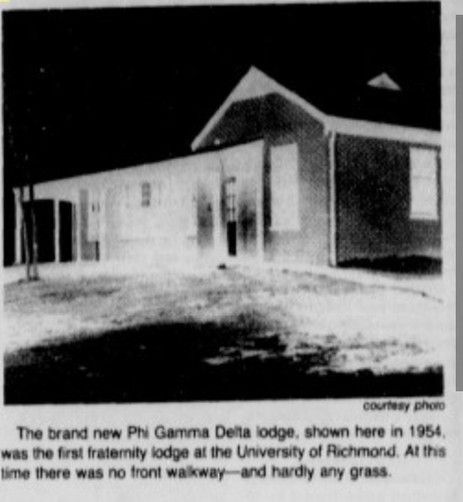
Phi Delta Gamma lodge 1984
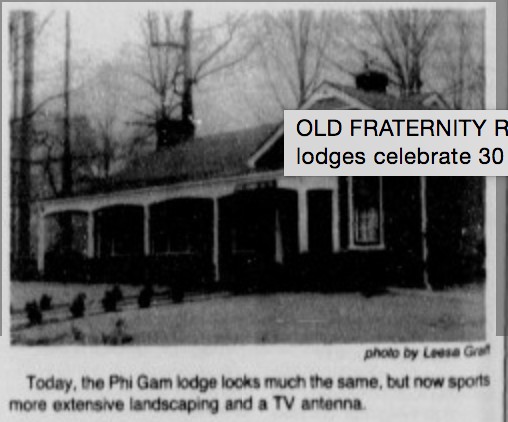
A current image of the FIJI lodge
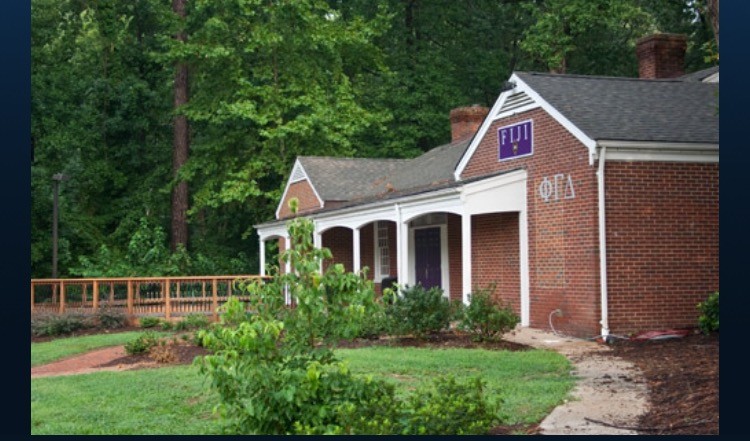
A current image of the Theta Chi Lodge
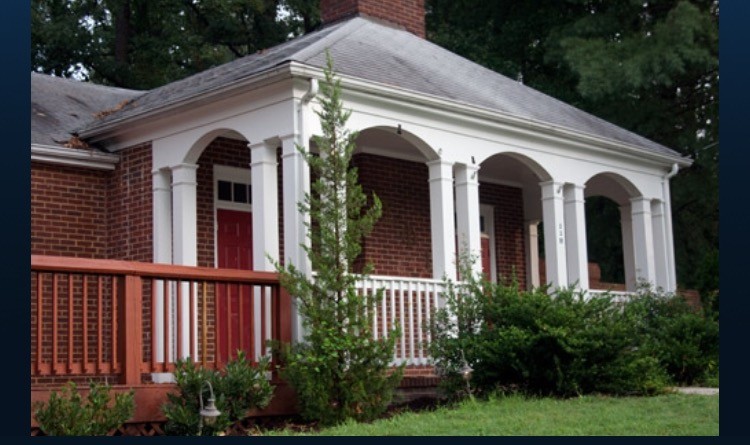
Current image of the Sigma Chi lodge
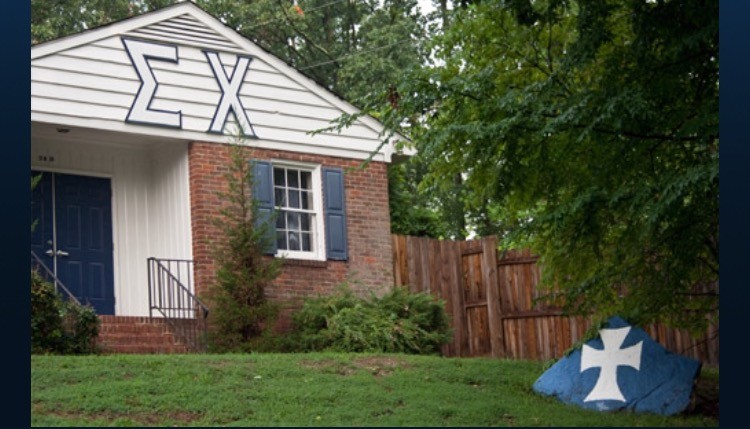
Backstory and Context
Text-to-speech Audio
The lodges, a consortium of nine mid-century ranchers, sit across the Robins Center on College Road at the northern end of the University of Richmond campus. The purpose of the lodges were, and continue to be, for the social fraternities. Since 1870 fraternities have been a part of the University's student life, but in the spring of 1950 the administration of the University settled the question as to whether the social fraternities should be allowed to build lodges.1 Greek life at the University of Richmond was often compared to other colleges that had fraternity houses, particularly William and Mary. This difference was used to encourage the construction of lodges because it made the University appear more appealing and established.
The lodges were never intended for residential use; they only served as a social gathering place. The lodges were and remain inconsistent with the traditional architecture of the school. Originally the lodges’ suburban architecture was due to limited funding but the need to make them uniform to campus has never been a concern. The goal of the Interfraternity Council was to construct three lodges on the northern end of campus but the road to access the lodges did not yet exist. The responsibility of constructing the road, sewage and water lines was assumed by the University. The funding for the lodges came partially as loans from the University, capped at $7,500, in addition to the land given to the fraternities for free.2 In May 1952, after two years of fundraising, Phi Delta Theta, Phi Gamma Delta and Sigma Phi Epsilon broke ground on what is now called “old frat row”.3 Other social fraternities were inclined to construct their own lodges and by the end of 1956 there were five lodges on the row.4 The progression continued in 1958 when five new lodges began construction on what is now called “new frat row”.5
For the fraternities of the University of Richmond the 1950s meant the beginning of lodges and a “time for jubilation among the fraternity men on campus...the beginning of a new era of fraternity social life at the University”.6 Through tracking the history of the lodges, one can see the consistencies in Greek life and how it adapted in conjunction with the University and the times of the country.
By the 1960s the fraternities and the University were determining the policies and purposes for these new social enclaves. In that decade fraternities had to pre-register the parties in the lodges and chaperones were required if women were expected.7 This requirement continued and still exists to some degree, but what the authorities expected and accepted changed over the years. In the 1960s the fraternities pushed back on this policy and demanded that the University instill more trust in them. The physical division between the Richmond and Westhampton campuses made the lodges a primary location of coed interaction. The question of when and under what circumstances women were allowed to lodges was a major concern of the 1960s.
Issues involving alcohol appeared in the late 1960s and continue to persist as a problem into the decades that follow. Even when low-percentage beer was legal, the University remained strict in the sixties on its policies but fraternities were not compliant. In the fall of 1966 SAE was expelled from campus with six other frats penalized due to out of control drinking. In response to these actions the Interfraternity Council created an elaborate court system to hold fraternities accountable for staying sober at the lodges.8 Fraternity leadership complained that these alcohol policies were outdated but recognized that they had to comply with the University policy because of the financial support received in the construction of the lodges.9 In 1968 the fraternities submitted a request to either build new residential houses or add on to the to lodges for housing. Considering the financial state of the University of Richmond at this time, this proposal was rejected due to lack of funds.10
In the 1970s the use of lodges and the social scene around Greek life grew rapidly. The University received a donation of $50 million from E. Claiborne Robins, forever changing the trajectory of the school. This donation, along with merging of Richmond and Westhampton colleges, influenced the social dynamics of campus. The era of the seventies marked a time of sexual liberation and increased acceptance of drug use. In response to cultural shifts, the University changed the policy for alcohol to allow drinking on specific areas, one of which being the lodges.11 The first publicized appearance of drugs within the fraternity cultural arose in the late 1970s when students were caught with LSD and cocaine.12 Instances like these became a regular occurrence in the decades to follow, as they were on campuses across the country
The increase in funds and the integration of gender helped established what is now considered the “college experience”. This quintessential college experience had a heavy emphasis on the social life of the college student. The weekend became a coordinated string of social events predominantly surrounding Greek life and lodges. The hype surrounding these events encouraged, then and now, social conformity, though that conformity has become less pronounced due increased student diversity. The routine and expectation of weekend social events surrounding fraternities (and specifically lodges) remain a cornerstone of students’ social lives of the University of Richmond.
The lodges consistently continued their roles as the predominant location for alcohol consumption and coed social interaction on the University grounds but the nature of those activities changed with the eras. It was in the 1980s when the culture and attitudes associated with fraternities began to become clear. These traits include hyper masculinity, entitlement, and competition. The 1980s mark the campus’s first acknowledgement on the issue of rape, a reaction in part to the more of sexually liberal culture of the seventies. The sexual assault on campus was frequently tied to the events held by fraternities. In 1988, a Collegian article stated that women who were concerned about sexual assault should simply not attend the lodges.13 In another article, the author claimed that lodges provided a space to allow “men to be men”.14 In the eighties the lodges were the primary location for coed social interaction because housing was staunchly segregated by gender and had restricted visiting hours. When the question of coed housing arose one fraternity member stated: “The girls come to our lodges on weekends —why should we have to deal with them during the week?”.15 In a celebration held for the 30th anniversary of lodges in 1984 many Greek life members stated the system of lodges and fraternities have remained the same over the years.16
The purpose of lodges and culture of fraternities stayed consistent through the1990s, but there were various structural changes to the lodges. Many of the lodges were either renovated or demolished on old frat row. In 1996 renovations were required for many of lodges to meet fire safety standards.17 In the late nineties three houses on old frat row were demolished and two new ones were built in the following years.18 In the absence of lodges, more fraternities started having parties off campus or at the apartments. In the nineties more of the student body participated in Greek life social events, making it more competitive to get into to lodges. Despite larger student body participation fraternity membership decreased over the nineties from 55% to 45%.19 This trend continued into the 2000s and today with only about a third of the male undergraduates in Greek life.
Today, the lodges are arguably the least glamorous and most dilapidated buildings on the University of Richmond campus. Despite their lackluster appearance and peripheral location, they embody a large part of the student body’s social experience. From the 1950s to today, the social preoccupation has been fixated toward Greek life and the lodges.
Sources
2. "School Offers Loans to Frats." The Collegian (Richmond), February 10, 1950.
3. "Three Frats Plan Lodges Next Year." The Collegian (Richmond), May 23, 1952.
4.Burch, Bill. "Frat Houses On Way Out Says Trustees." The Collegian (Richmond), December, 1958.
5. Ibid
6. "Three Frats Plan Lodges Next Year." The Collegian (Richmond), May 23, 1952.
7. Harrison, Robert. "Why This Policy." The Collegian (Richmond), 1960.
8."SAE Kicked Off Campus Six Others Get Penalties." The Collegian (Richmond), December 2, 1966.
9.Brumback, Ron. "Drink In Lodges Poses Problem." The Collegian (Richmond), November 11, 1966.
10."Board Rejects IFC Proposal For Housing." The Collegian (Richmond), February 21, 1969.
11."Trustees Decision: Wet or Dry Campus." The Collegian (Richmond), September 13, 1973.
12."'X' Rebuts Drug Report." The Collegian (Richmond), February 22, 1979.
13.Pattillon, Laura. "Men Question Their Roles In Society." The Collegian(Richmond), April 7, 1988.
14. Ibid.
16. Driver, Cynthia. "First 3 Fraternity Lodges Celebrate 30 Years." The Collegian(Richmond), February 16, 1984.
17.Kusiak, Michael. "Fraternity Lodges Closed." The Collegian (Richmond), September 5, 1996.
18.Prestandrea, Dana. "Construction Forces Three Lodges to Relocate." The Collegian (Richmond), September 10, 1998.
